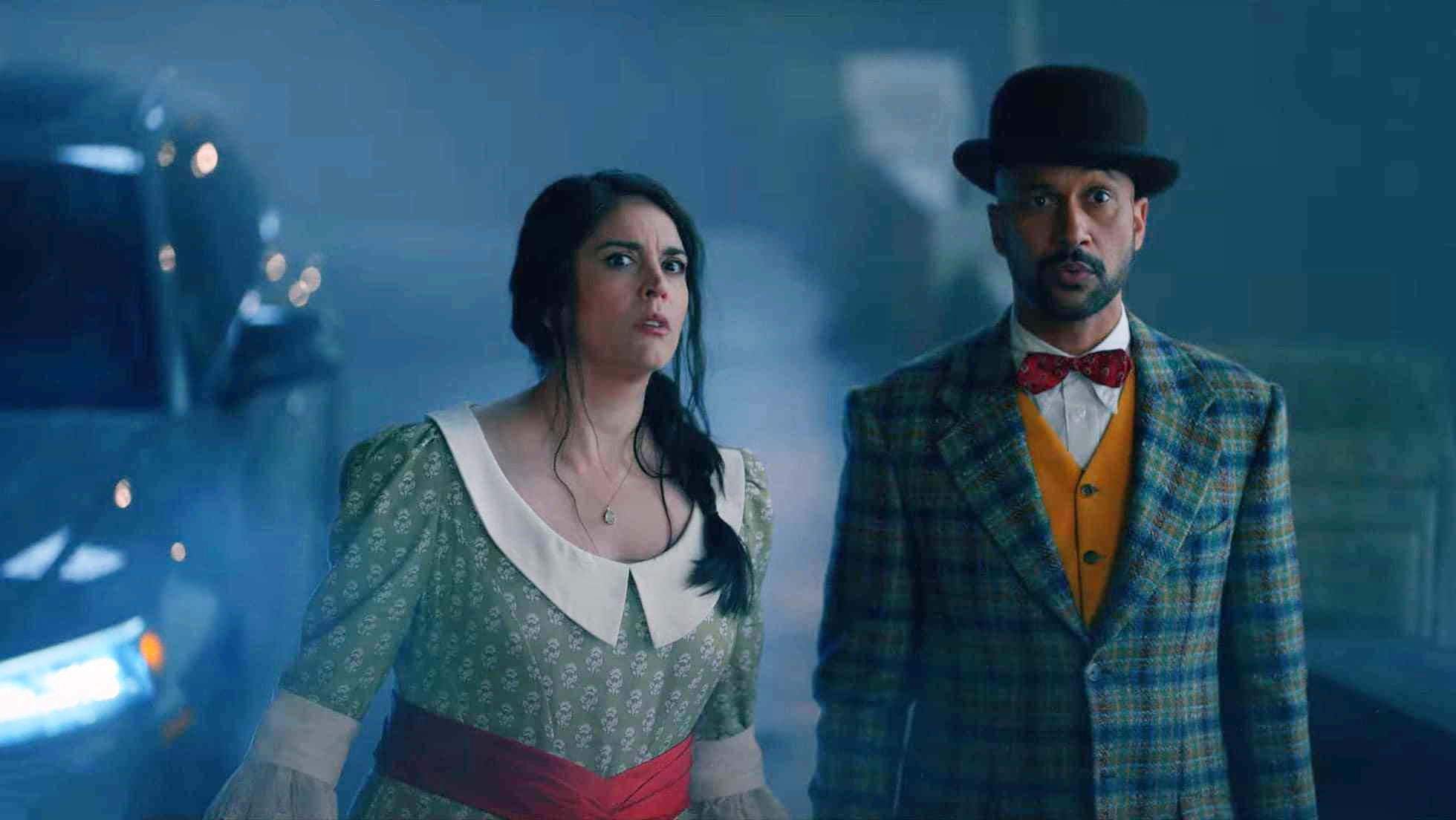
Musical Purgatories: Schmigadoon!
Jon Joffin, ASC pays homage to the song-and-dance genre.
Moving from its first season to its second, the Apple TV-Plus series Schmigadoon! leaps across entire eras of musical history — and from a small, idyllic village to a seedy cityscape. To make that transition, showrunner and series co-creator Cinco Paul turned to ASC member Jon Joffin, who shot all six episodes of Season 2.
In Season 1, a pair of New York doctors (Keegan-Michael Key and Cecily Strong) embark on a backpacking trip in the hope of resuscitating their fizzling romance. Lost in the wilderness, they stumble upon the titular town: a magical hamlet where the inhabitants behave as if they’re in a Golden Age Hollywood musical. Season 2, which debuted in April, finds the couple once again heading into the wild in search of rejuvenation. But instead of the bucolic Schmigadoon — which reflects the boisterous spirit of musicals like Oklahoma!, The Music Man and Carousel — they wander into Schmicago, where the edgier musicals of the 1960s and ’70s like Cabaret, Sweeney Todd and Hair infuse its urban environments.
“We wanted something very different for Season 2,” says Paul, who also penned all of the show’s original songs. “We wanted it to be darker and grittier, but at the same time, we didn’t want to lose our delightful tone. Jon really delivered that. Everybody, including the cast, was stunned when they first saw the footage. They were like, ‘We are definitely not in Schmigadoon anymore!’”
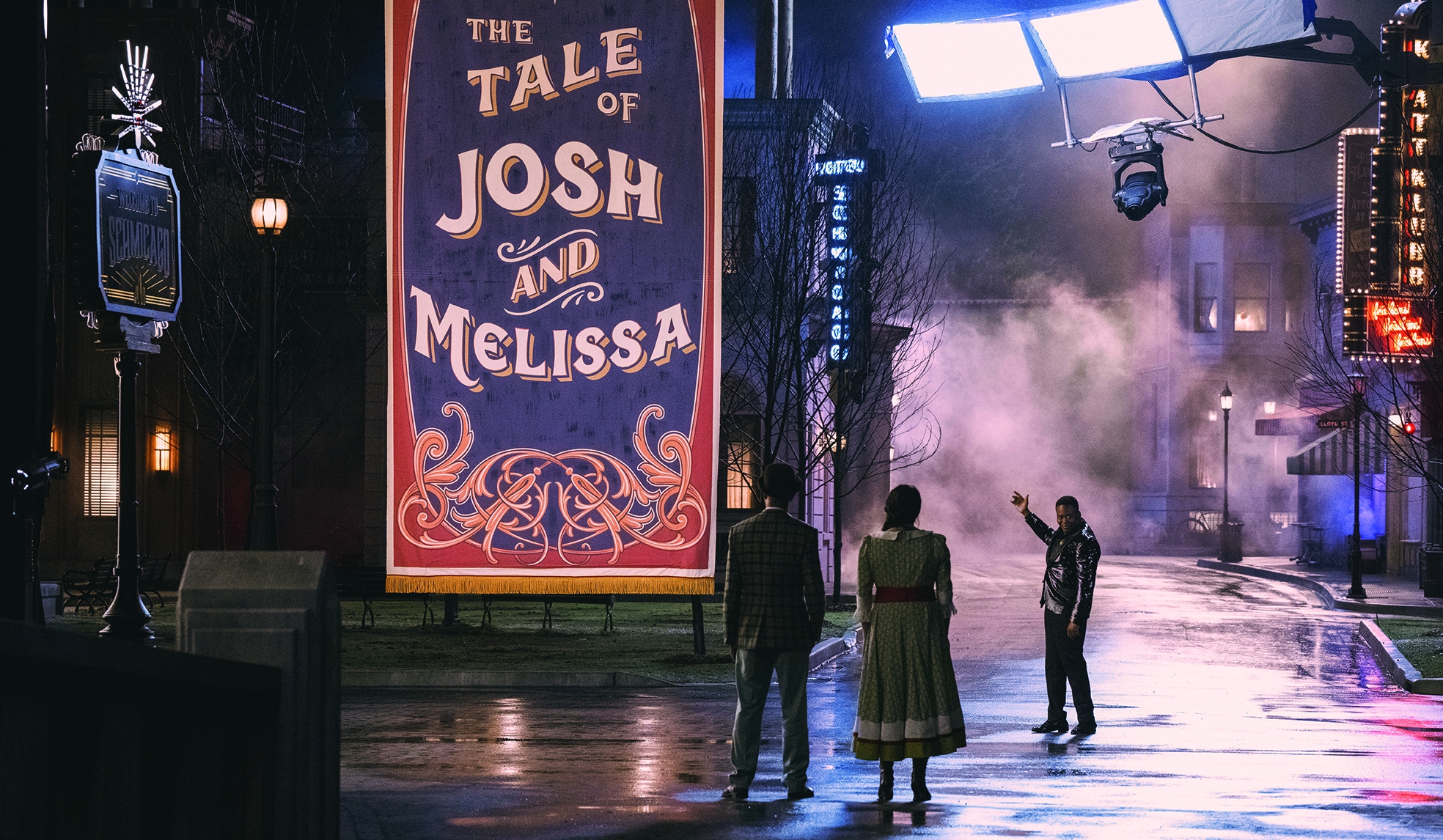
A Three-Strip Technicolor Tour
The new look melds the darker style of Cabaret with the more colorful palettes of Sweet Charity, The Umbrellas of Cherbourg and How to Succeed in Business Without Really Trying. Paul decided that the entire season’s unifying stylistic element would be its replication of the look of three-strip Technicolor, a process whose heyday extended from the mid-1930s to the mid-1950s.
“Cinco had this really specific vision for the new season, and the three-strip Technicolor look was the basis of everything,” says Joffin. “I honestly didn’t know much about the process — which was actually great, because I got to do a deep dive into it.”

His research included conversations with fellow ASC members M. David Mullen and Michael Pessah, both film-history buffs. It also included binging Technicolor films and classic musicals, which is where Joffin discovered his muse. “I was watching a video about The Criterion Collection’s restoration of The Red Shoes, featuring commentary by Martin Scorsese, and that was my ‘eureka’ moment. That restoration was what I wanted to base the look on. I wanted to give Cinco his color-rich Technicolor, but I also wanted to put my own stamp on it. I wanted the lighting to be more modern, with more contrast and softer light.”
Technicolor’s three-strip process involved a beam-splitting prism behind the lens that allowed for the capture of separate red, blue and green records onto three strips of black-and-white film, followed by a complicated dye-transfer process to create release prints. The technique was expensive, required copious amounts of lights and employed a nearly 500-pound blimped camera, but the results offered colors with unrivaled richness and vibrance.

LUT No. 5
To re-create the Technicolor look using a contemporary digital sensor, Joffin enlisted the expertise of Company 3 colorist and ASC associate member Jill Bogdanowicz, with whom he had recently collaborated on the Netflix series Keep Breathing.
Bogdanowicz notes that although classic Technicolor is often associated with lively colors, the key to achieving it with today’s technology isn’t simply about cranking up the saturation. “What really defines three-strip is color separation,” she explains. “The way I like to describe it is that all the colors stay in their own lanes.”
Before Joffin approached her about reviving the three-strip look, Bogdanowicz was already tinkering with doing just that. She’d previously developed a library of Technicolor LUTs, and she selected five of them to tweak specifically for Joffin’s Schmigadoon! camera package: the Sony Venice 2 and Zeiss Supreme Prime Radiance lenses.
Armed with Bogdanowicz’s LUTs and a few color swaths from the show’s costumes, Joffin headed to Keslow Camera Vancouver to test. “One LUT was hands-down the winner — it was exactly what we were looking for,” says Joffin. “I called Jill, and before I could say anything, she asked, ‘Is it LUT number 5?’ She already knew which one we were going to pick!”
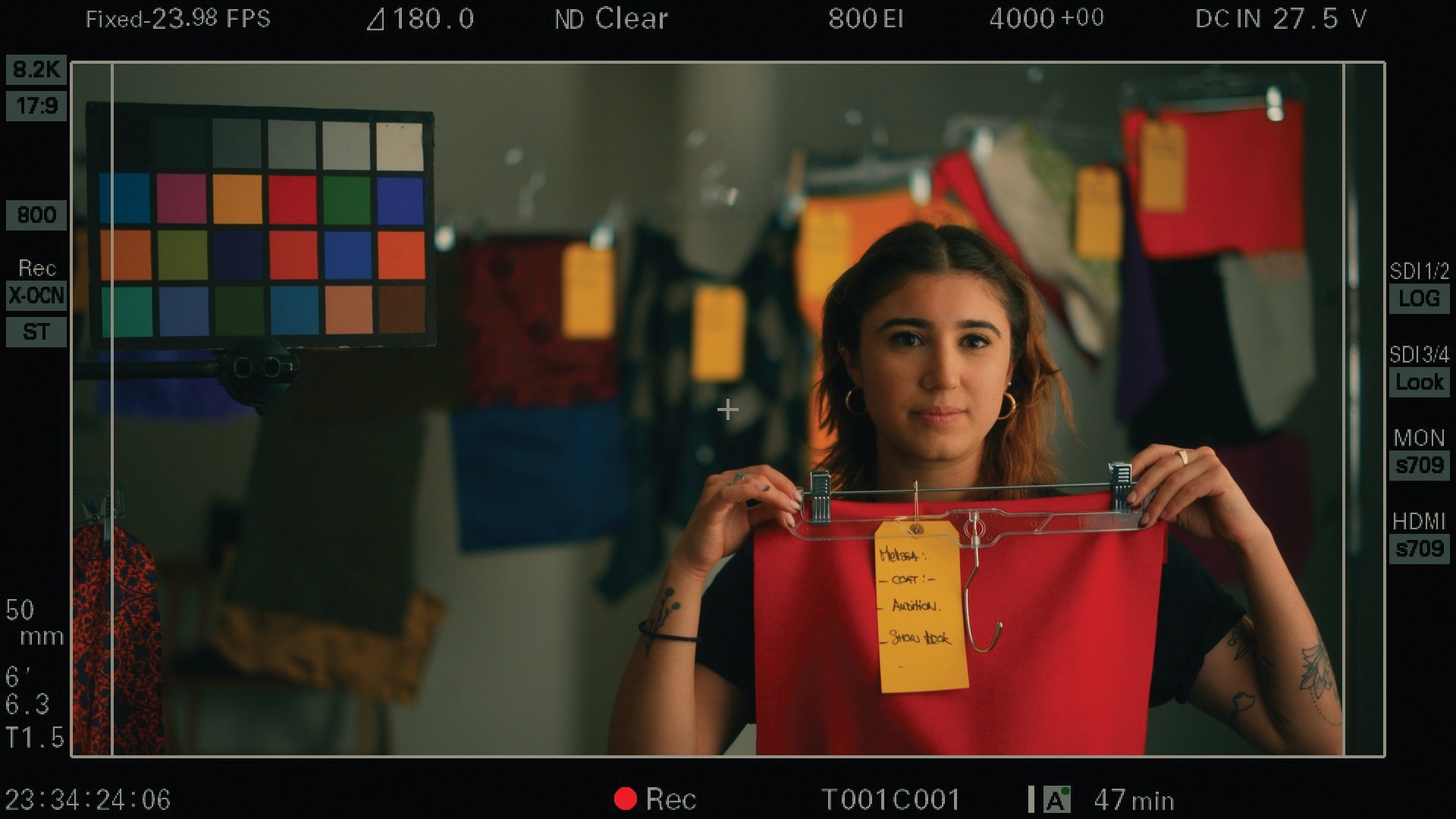
Don’t Lose the Detail
Though Joffin used the LUT for the entire season, the show’s palette is far from monotonous. In the Cabaret-inspired Kratt Club, the primary colors pop, contrasting with the warm tungsten practicals throughout the set. Most of the show’s interiors were shot on stage at Golden Ears Studios in Vancouver, and in the grade, Bogdanowicz wanted to make sure the sets and costumes still played in the intimate club environment. “It was really important to Cinco that we didn’t get too crushed or too dark,” she says. “There’s so much detail in all of these sets and costumes. We didn’t ever want to lose that, but we still wanted to create a rich image.”
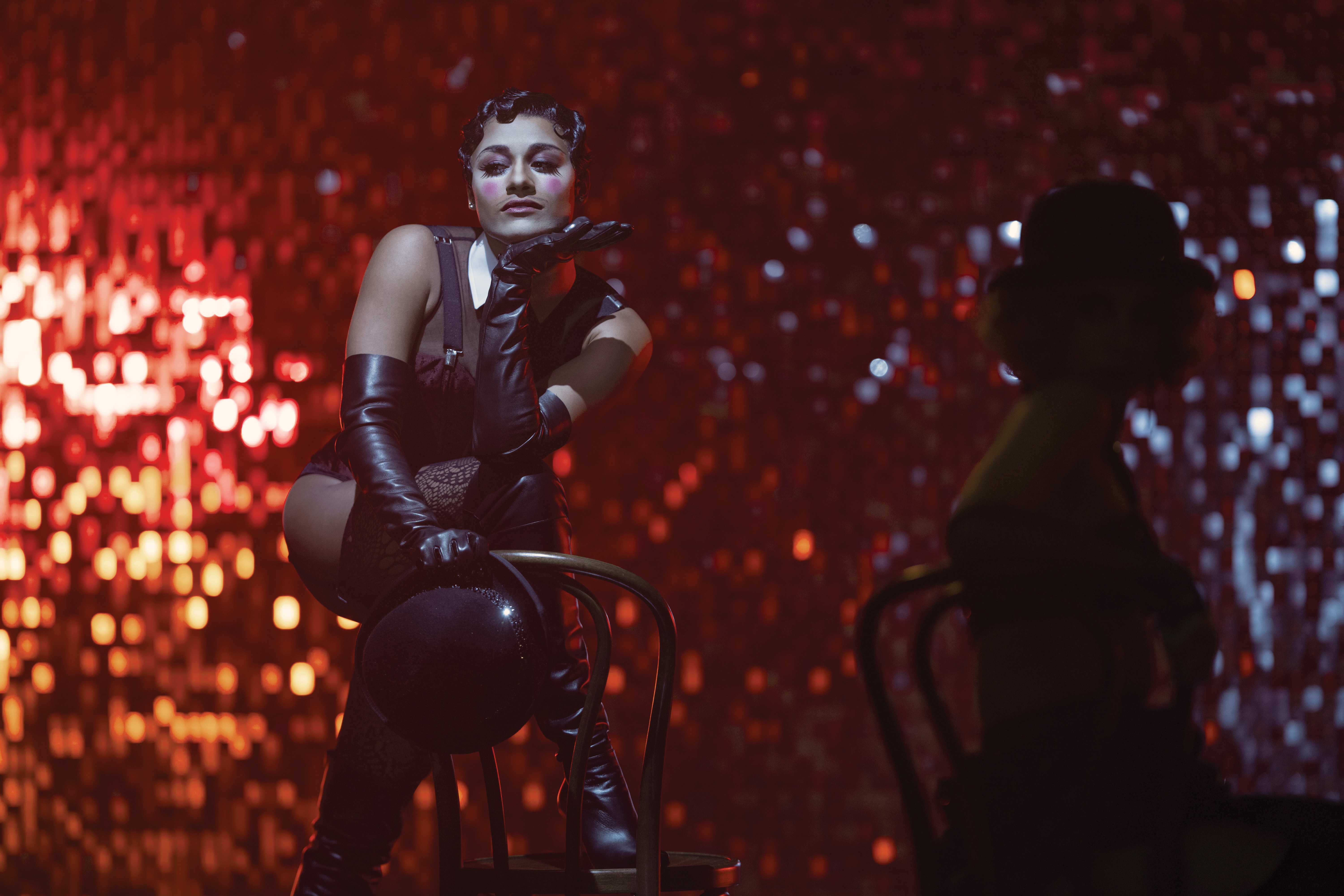
Joffin adds, “The stunning costumes by Angus Strathie and the insanely beautiful production design by Jamie Walker McCall were so perfect that I wanted to make sure not to alter them in any way.”
Paul also wanted to keep the focus on his talented performers. With limited time to shoot the musical numbers — for example, one-and-a-half days were allotted for Jane Krakowski’s courtroom performance of “Bells and Whistles” — Joffin often started coverage with a proscenium point of view, as though the camera is a spectator watching a play.
“I'm always irritated when dance scenes are shot with way too many cuts and I can't even see the choreography,” Paul observes. “We have the best dancers in the world on this show, and one of the great choreographers in Christopher Gattelli, so it behooves us to set up the camera in a way where you see them head-to-toe as much as possible.”

Joffin notes, “Paul and Chris had such a strong vision for the choreography, and it always played so well in a wide shot. We would start each dance by shooting a head-to-toe wide shot. In many cases, such as in parts of ‘Good Enough to Eat,’ the wide shot would be all we would need. With ‘Kaput’ or ‘Talk to Daddy’ we needed some tighter specialty shots, but Cinco is so specific that we always knew exactly what those shots were.
’60s and ’70s Palettes
For the Sweeney Todd-inspired Victorian block that houses the butcher shop and orphanage run by Dooley Blight and Miss Codwell (played by Alan Cumming and Kristin Chenoweth, respectively), the 1968 period musical Oliver! served as the touchstone. “We definitely leaned into a warmer white point for those scenes,” says Bogdanowicz. “We brought out the greens and the yellows a little bit stronger, but we still kept the reds popping. We wanted to make sure we didn’t ever fully lose those reds and blues.”
In scenes set at a hippie compound on the outskirts of Schmicago, Joffin used Lensbaby Omni filters to add a rainbow flare that accentuates the communal warmth. “We’re in the world of Godspell at the compound,” says Paul. “It’s bright and colorful, and it looks like every scene is shot at magic hour.”
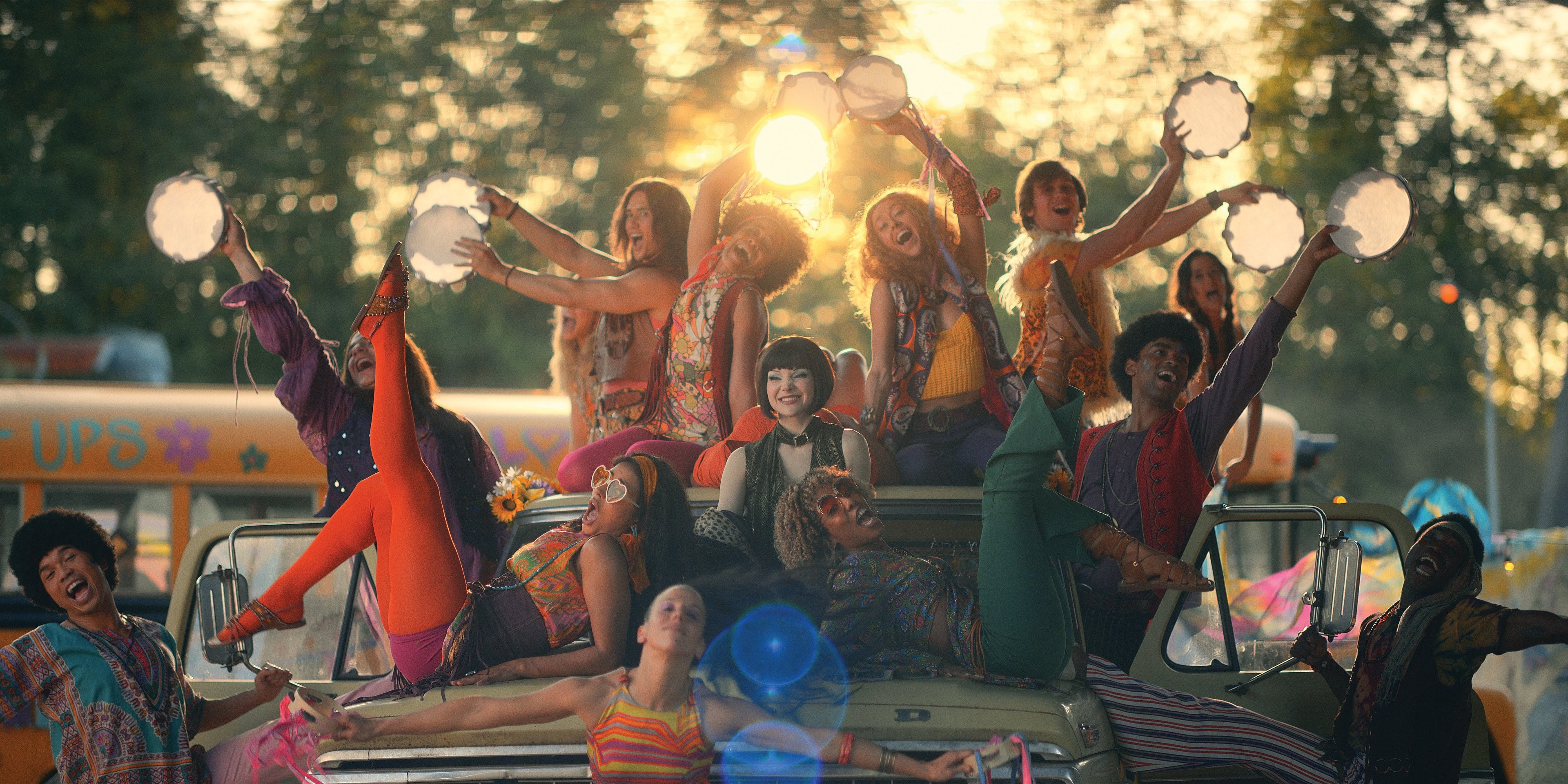
A Dramatic Progression
Before Season 2 begins basking in Technicolor, the story kicks off in a New York City that grows drearier as Josh (Key) and Melissa (Strong) become worn down by their routine existence.
Paul explains, “When Josh and Melissa first come back from Schmigadoon, they’re bringing the colors and the magic of Schmigadoon with them. Then, gradually, the real world drains it out of them again. When they arrive in Schmicago, I wanted the viewer to feel that difference immediately. I could see it was torturing [Joffin] as we pulled more and more color out [of the New York sequences during the grade], but it was really important to me that there was a progression, and I didn’t want it to be subtle.”
The couple arrives in Schmicago at night, and they’re greeted by the Pippin-inspired number “Welcome to Schmicago.” A series of marquees light up, and narrator Tituss Burgess belts out the tune, backed by the cast (many of them actors from Season 1 in new roles). Though some of the buildings in the distance were digital set extensions, most of Schmicago was built by production designer Jamie Walker McCall and her team on the backlot of Martini Film Studios outside Vancouver.
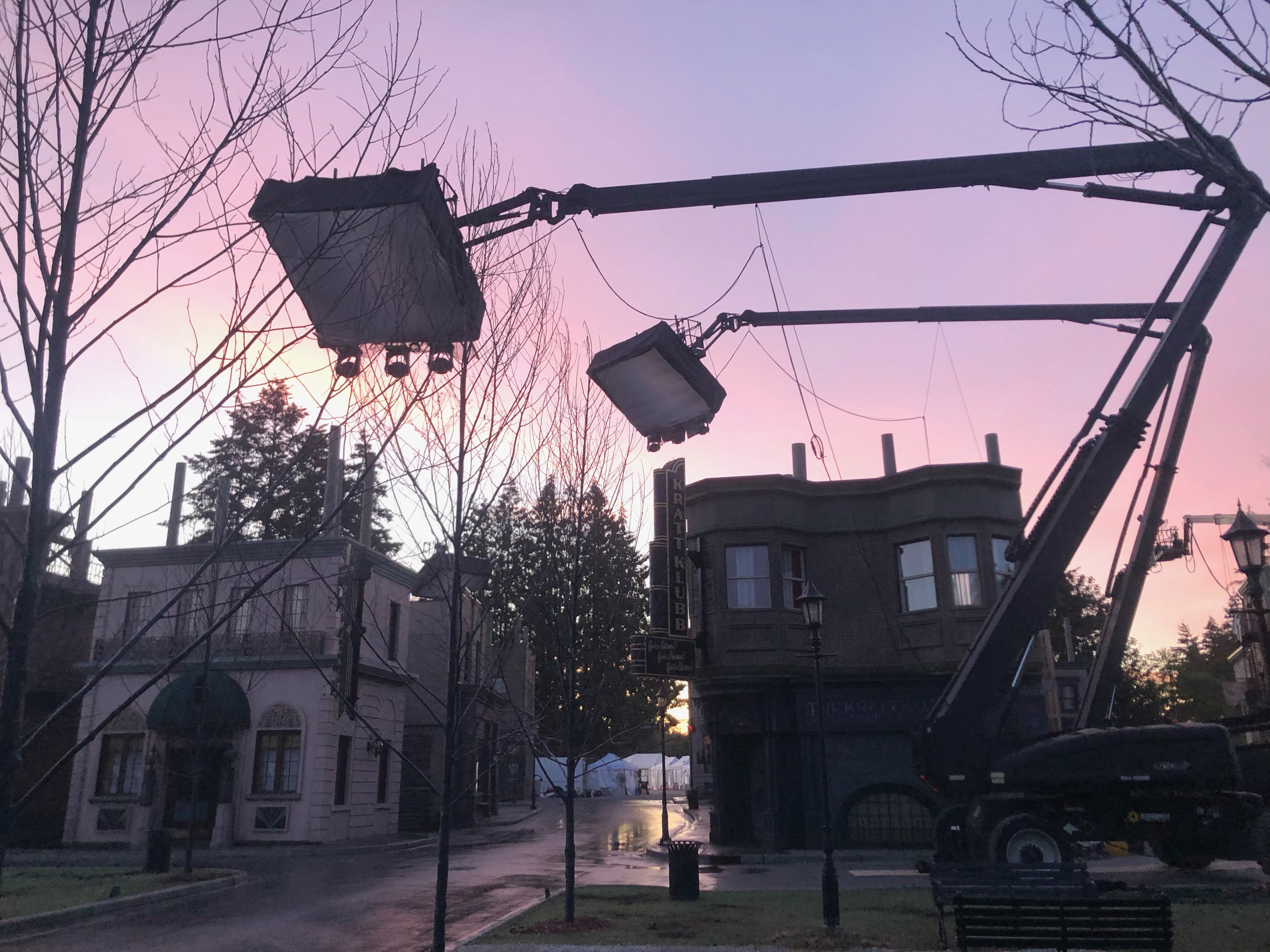
Maximum Flexibility
To prep the musical numbers, Gattelli shot and edited previs during rehearsals, but Joffin often wouldn’t see the choreography on set until the day of shooting. That required maximum flexibility from his gaffer, Todd Lapp, who has worked with Joffin for nearly 20 years. Lapp developed as many as 10 different looks for each musical number; the sets were pre-rigged to accommodate all of them, and when Joffin and Lapp saw the rehearsals onstage for the first time, they’d select a look.
“I had to make sure I had options available to Jon very quickly and that I was able to control all the lighting live while we were shooting,” says Lapp, who made adjustments during takes on an analog fader wing tethered to the main lighting-control consoles. “We’d pick the color palettes in rehearsal as they were blocking, and then essentially set the light intensities as much as we could. Sometimes we might have as little as 20 minutes of rehearsal, and then we’d be rolling.”
“Having enough time was a constant struggle, and a lot of that is on me because I wrote a much bigger season,” notes Paul. “We had the same number of shooting days as on Season 1, but there are about 10 more musical numbers. We had to be very collaborative and able to improvise.”
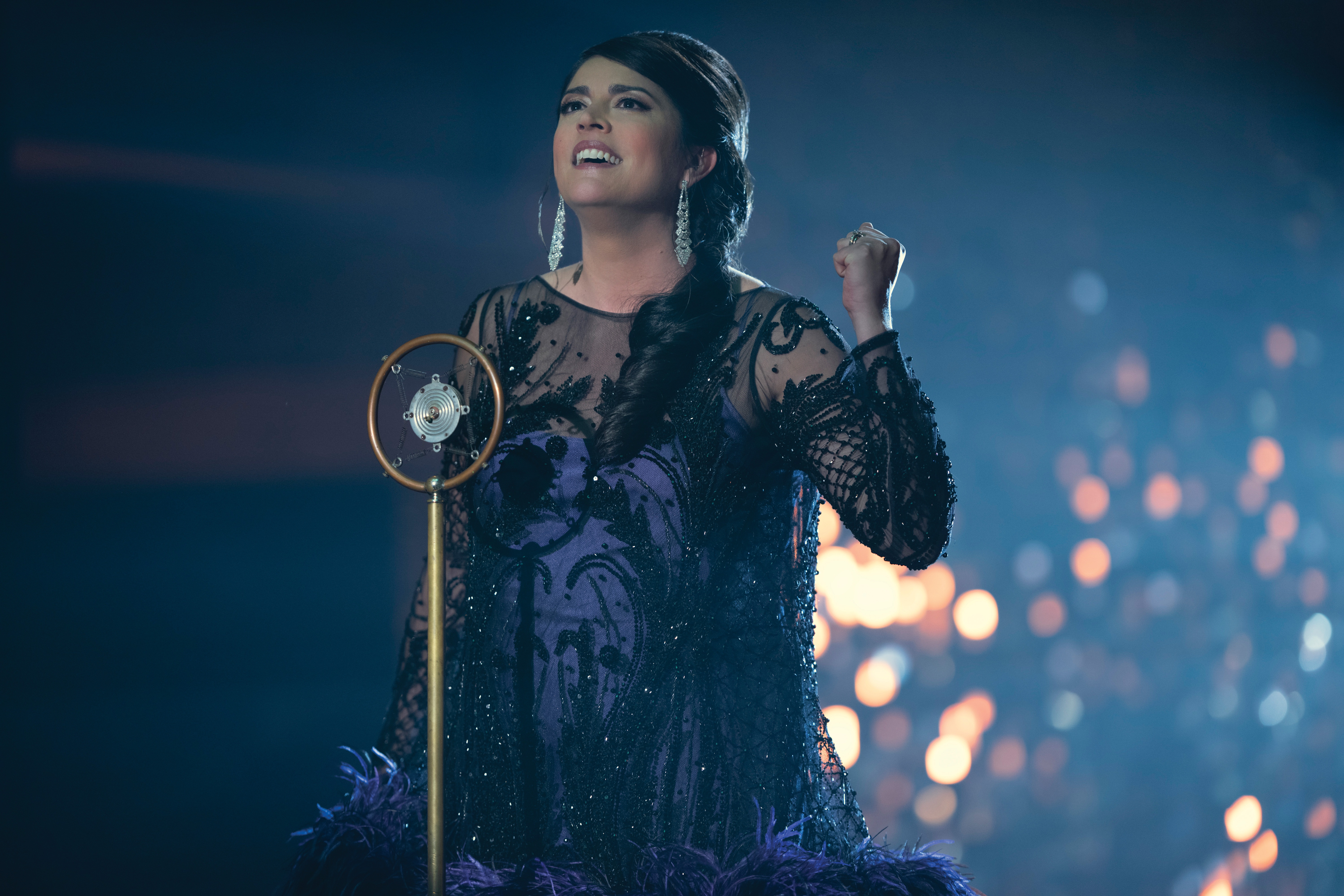
The “Welcome to Schmicago” sequence required 15 Aerial lighting platforms supporting a mixture of Skypanel S60-Cs in softboxes and Martin Moving lights for hard edges, but the hero units for the sequence were a creation of Lapp’s, dubbed Trojan Horses. Lapp designed the rig in 2020 on the Freeform series Motherland: Fort Salem in collaboration with that show’s key grip, John Westerlaken, and rigging grip, Miguel Gelinas. Built on a box-truss system on wheels, Trojan Horses are essentially mobile 20' x 20' booklights. The tops and bottoms of the rigs are lined with a dozen Arri SkyPanel S60s interspersed with 1K Molequartz Nooklites, bounced into bleached muslin backed by Ultrabounce to help with any weather, then skinned with Full Grid cloth for additional softening.
“We used three Trojan Horses as key lights, so in essence we would have a giant 60' x 20' softbox when they were combined,” Lapp explains. “Most of that opening dance sequence took place over approximately 150 feet of space, and key grip Devin Kaczmarski and I wanted something that was completely controllable that we could use even if it got a bit windy.”
The number is awash in color — the bright marquees, a raking blue light on the wet pavement, pops of red throughout the frame — but Joffin tried to keep that colored light away from skin tones. “We’d keep the light mostly neutral on faces,” the cinematographer says. “There were a couple of places where we did a little bit of warm lighting, but I didn’t want multicolored lighting on the actors; I wanted to let the costumes and the sets add the color.”

Simple and Soft Touches
Joffin notes that although he sought to emulate three-strip Technicolor, he didn’t want to replicate that era’s lighting style. “Back then the film stocks were really slow, plus they were going through the Technicolor camera’s colored filters, so the crews had to blast a ton of light. While the color is beautiful in a lot of those films, the lighting is sometimes quite flat and a bit hard to my taste; I prefer soft light. Whether it’s a bright look or a dark look, I want it to be soft light.”
For the show’s interiors, Joffin frequently used hard sources as backlights through large windows. These included 20K Fresnels, 10K Molebeams and Cineo Reflex R15 bi-color LED spots, depending on the need. For key and fill closer to the actors, he turned to Sourcemaker LED blankets, SkyPanels, and muslin-covered batten strips filled with Astera Titan Tubes, all pushed through layers of Magic Cloth.
For an extra pop of color, he would sometimes cover a few panes of a set window in colored gel. “Jon is really good at adding touches like that,” says Lapp. “He can look at a frame and come up with something that’s really quick and simple that makes the shot more exciting.”

TECHNICAL SPECS
2:1
Cameras: Sony Venice 2
Lenses: Zeiss Supreme Prime Radiance; 58mm and 85mm Petzval from TLS






